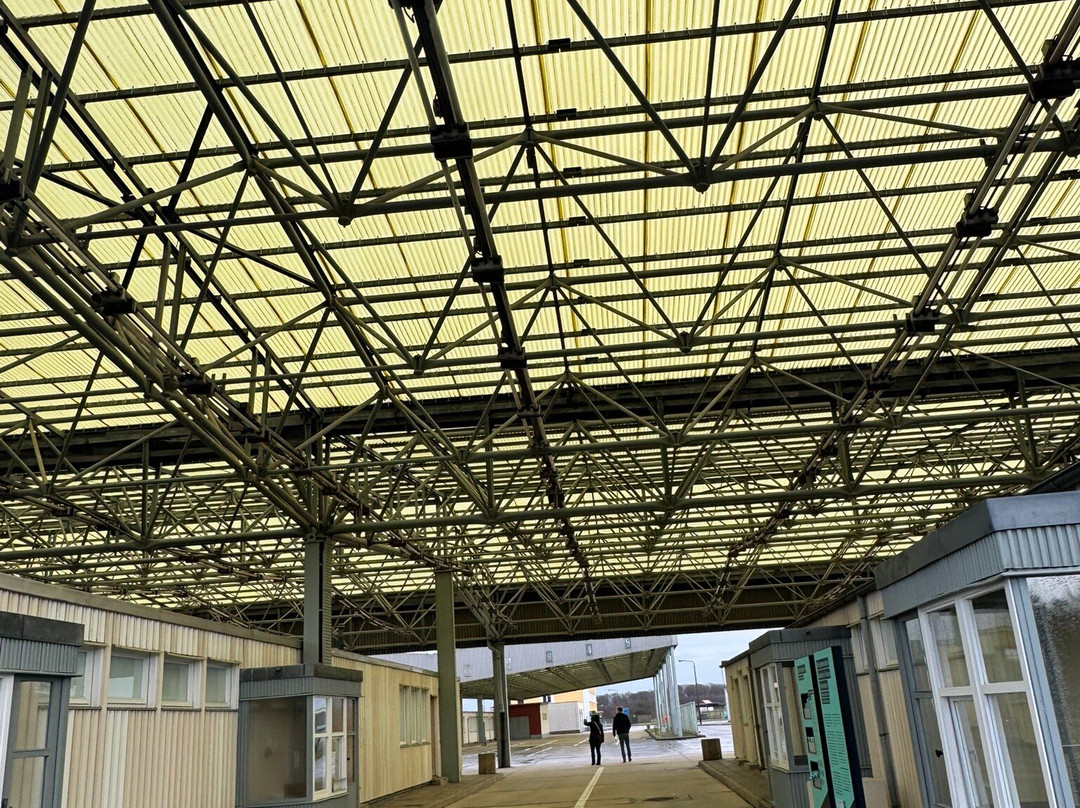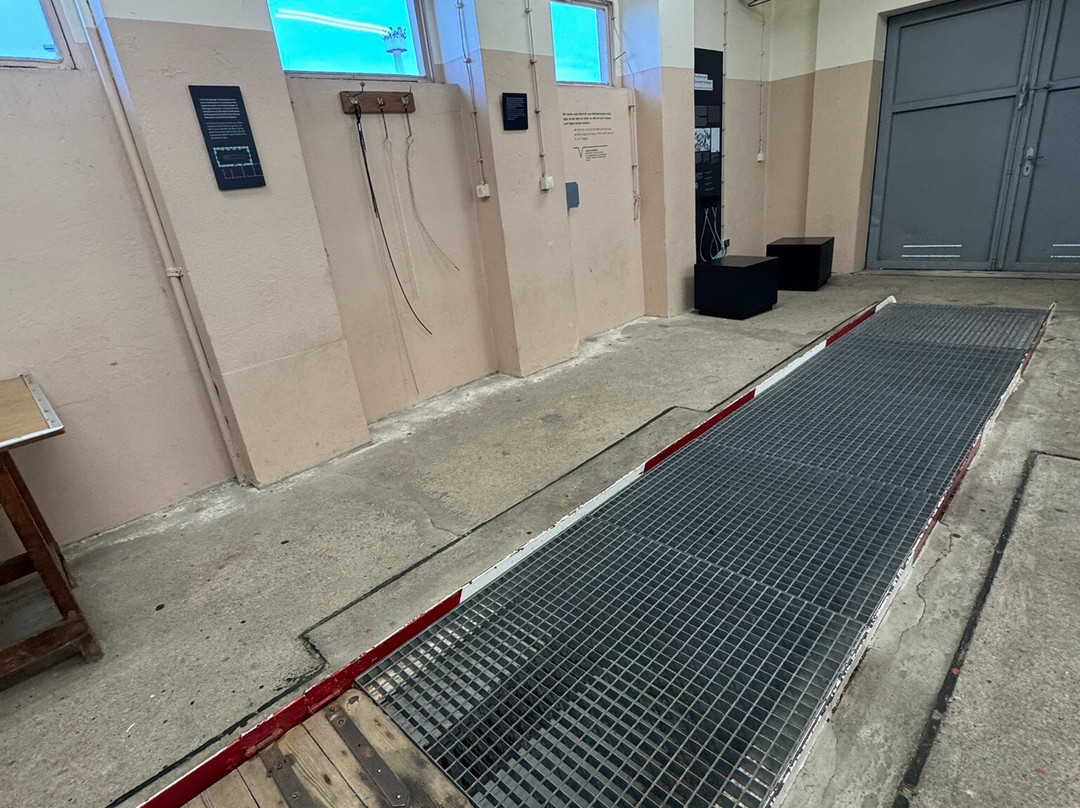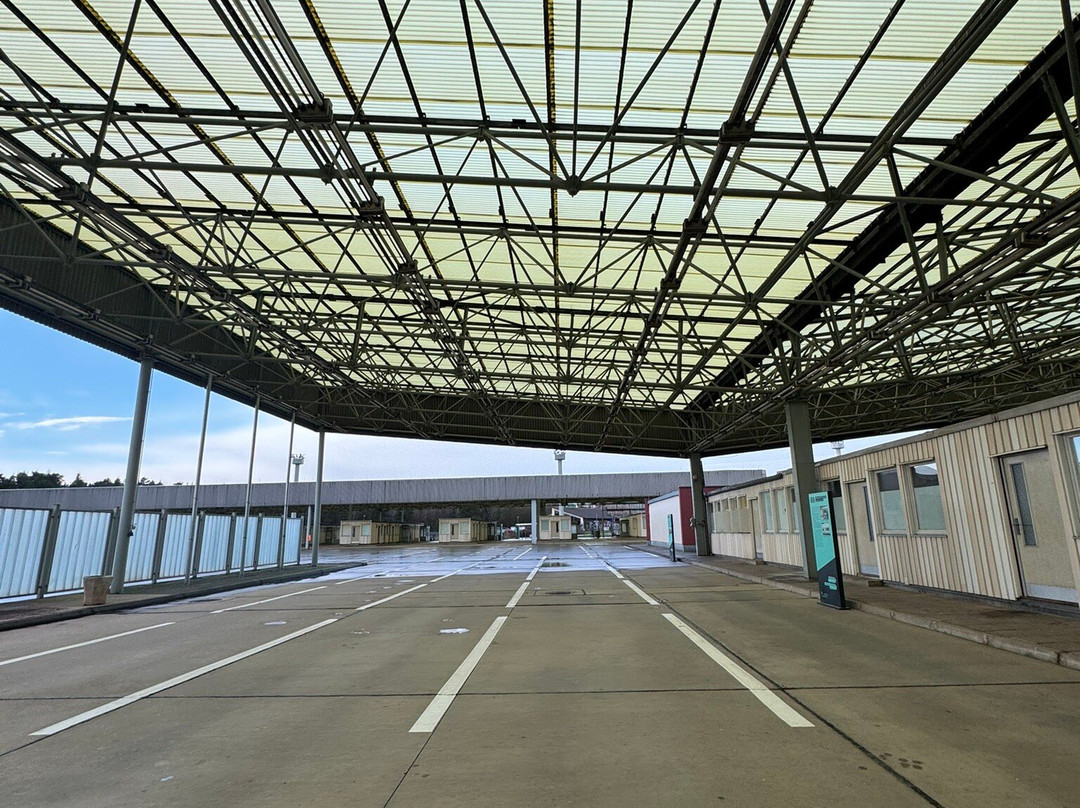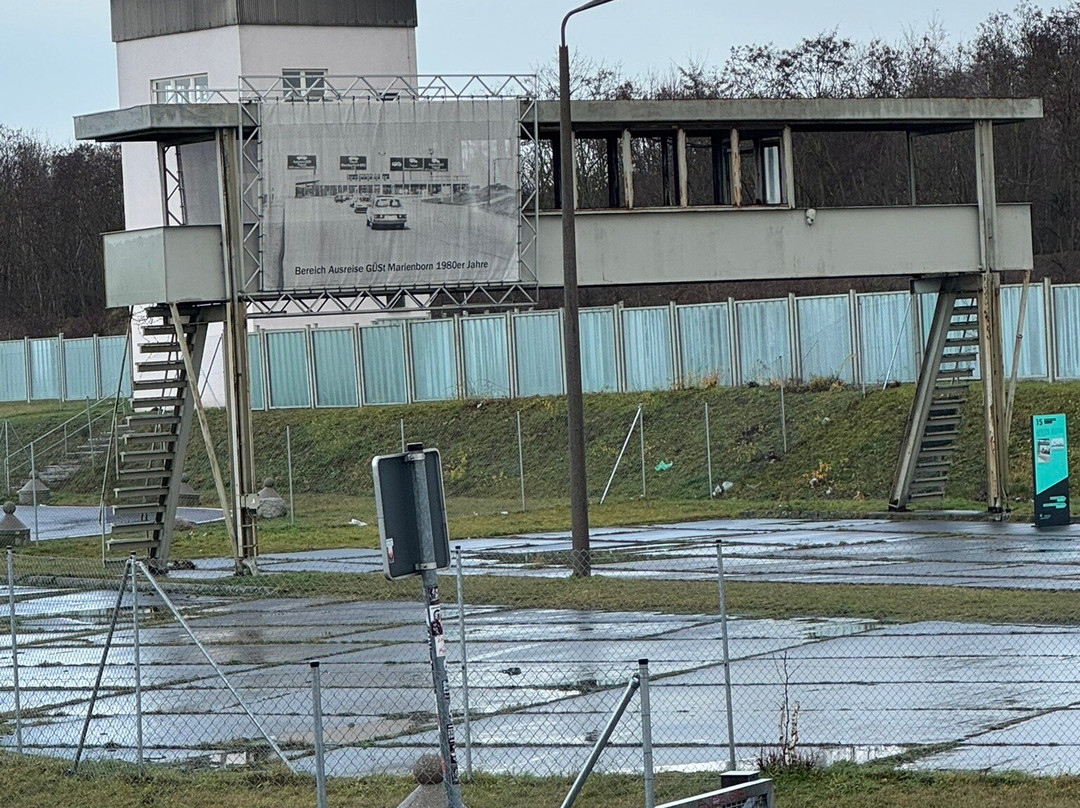的点评
A must visit
Gedenkstatte Deutsche Teilung Marienborn的点评
点评:The Helmstedt–Marienborn border crossing, also known as Grenzübergangsstelle Marienborn, was the largest and most significant checkpoint along the Inner German border during the Cold War. Strategically located on the A2 autobahn, it connected West Germany to West Berlin and served as a major transit route for travelers to East Germany, Poland, and Czechoslovakia. Established in 1945 at the demarcation line between British and Soviet zones, it began as a temporary checkpoint with wooden structures. Western Allies referred to it as Checkpoint Alpha, linking it to Checkpoint Bravo and Checkpoint Charlie in Berlin.
In the 1970s, East Germany expanded the site into a vast facility staffed by up to 1,000 personnel, including customs officers, border police, and passport control agents. It became a symbol of the Cold War division, known for its stringent border checks and surveillance. After political changes in 1989, border controls were relaxed, leading to the crossing’s closure in 1990. The site is now home to the Marienborn Memorial of German Division, established to commemorate Germany’s separation and eventual reunification.
The memorial offers exhibitions and guided tours, preserving the history of this iconic border crossing. It stands as a reminder of the division’s impact on society and the struggles faced during Germany’s period of separation.
In the 1970s, East Germany expanded the site into a vast facility staffed by up to 1,000 personnel, including customs officers, border police, and passport control agents. It became a symbol of the Cold War division, known for its stringent border checks and surveillance. After political changes in 1989, border controls were relaxed, leading to the crossing’s closure in 1990. The site is now home to the Marienborn Memorial of German Division, established to commemorate Germany’s separation and eventual reunification.
The memorial offers exhibitions and guided tours, preserving the history of this iconic border crossing. It stands as a reminder of the division’s impact on society and the struggles faced during Germany’s period of separation.
翻译:赫尔姆施泰特-马林博恩边境检查站,又名 Grenzübergangsstelle Marienborn,是冷战期间德国内部边境最大、最重要的检查站。该检查站位于 A2 高速公路的战略位置,连接西德和西柏林,是前往东德、波兰和捷克斯洛伐克的旅客的主要中转路线。该检查站于 1945 年在英国和苏联占领区的分界线上建立,最初是一个带有木结构的临时检查站。西方盟国将其称为阿尔法检查站,将其与柏林的布拉沃检查站和查理检查站联系起来。
20 世纪 70 年代,东德将该检查站扩建为一个庞大的设施,拥有多达 1,000 名工作人员,包括海关官员、边防警察和护照检查人员。它成为冷战分裂的象征,以严格的边境检查和监视而闻名。 1989 年政治变革后,边境管制放松,导致该过境点于 1990 年关闭。该地现在是马林博恩德国分裂纪念碑的所在地,为纪念德国分离和最终统一而建。
纪念碑提供展览和导游服务,保存了这一标志性过境点的历史。它提醒人们德国分裂对社会的影响以及德国分离时期面临的斗争。
20 世纪 70 年代,东德将该检查站扩建为一个庞大的设施,拥有多达 1,000 名工作人员,包括海关官员、边防警察和护照检查人员。它成为冷战分裂的象征,以严格的边境检查和监视而闻名。 1989 年政治变革后,边境管制放松,导致该过境点于 1990 年关闭。该地现在是马林博恩德国分裂纪念碑的所在地,为纪念德国分离和最终统一而建。
纪念碑提供展览和导游服务,保存了这一标志性过境点的历史。它提醒人们德国分裂对社会的影响以及德国分离时期面临的斗争。
旅行类型:全家游





此点评仅代表旅行者个人的主观意见,并不代表TripAdvisor以及其合作方的意见。
关于我们
|
新闻动态
|
商务合作
|
会员中心
|
业主中心
|
业主通
|
常见问题
|
意见反馈
|
联系我们
|
营业执照
© 2025 Tripadvisor 版权所有。
使用条款 |隐私政策 |网站工作原理
部分照片由 VFM Leonardo 提供。
* Tripadvisor不是旅行社,也不是旅游预订服务代理商。我们提供免费、客观、公正的旅游资讯服务。 (显示更多)
TripAdvisor LLC 既不是预订代理商,也不是旅游运营商,不会向网站用户收取任何服务费。 按照规定,在 Tripadvisor 发布机票价格、游览和旅行套餐的合作伙伴(航空公司、旅行提供商及预订代理商),其标价须包含所有费用和附加费用。 例如, 机场出入境税费、消费税与其他服务费、手续费、杂费及附加费用。 当您向我们的某个合作伙伴进行预订时,请务必查阅他们的网站以了解当地行政部门要求的所有适用费用的具体情况。 除非另有说明,机票价格通常指的是一个人的价格(以人民币计)。
为方便起见,TripAdvisor LLC 根据从我们的预订合作伙伴获取的空房率计算每个酒店的均价。 对于游览和景点来说,所显示价格通常是每位成人的最低可用价格。 对于列出的任何旅行套餐或优惠,TripAdvisor LLC 无法保证任何特定的费率或价格。 此外,酒店均价每晚会更新,并以您的首选币种表示(使用现行汇率)。 由于这些已换算的价格是预估价格,因此,有关具体金额和币种请与预订网站进行核实。
此外,TripAdvisor LLC 无法保证我们网站上宣传的价格随时有效。 标价可能需要预订一定天数才能生效,或有不可用日期、使用条件或限制。
TripAdvisor公司对外部网站的内容一概不负责。优惠价格中不含税和其他费用。
ICP证:沪B2-20200433
沪ICP备20013175号
 沪公网安备31010502005427号
沪公网安备31010502005427号鹰程信息技术(上海)有限公司
货币/国家及地区
¥CNY
中国

